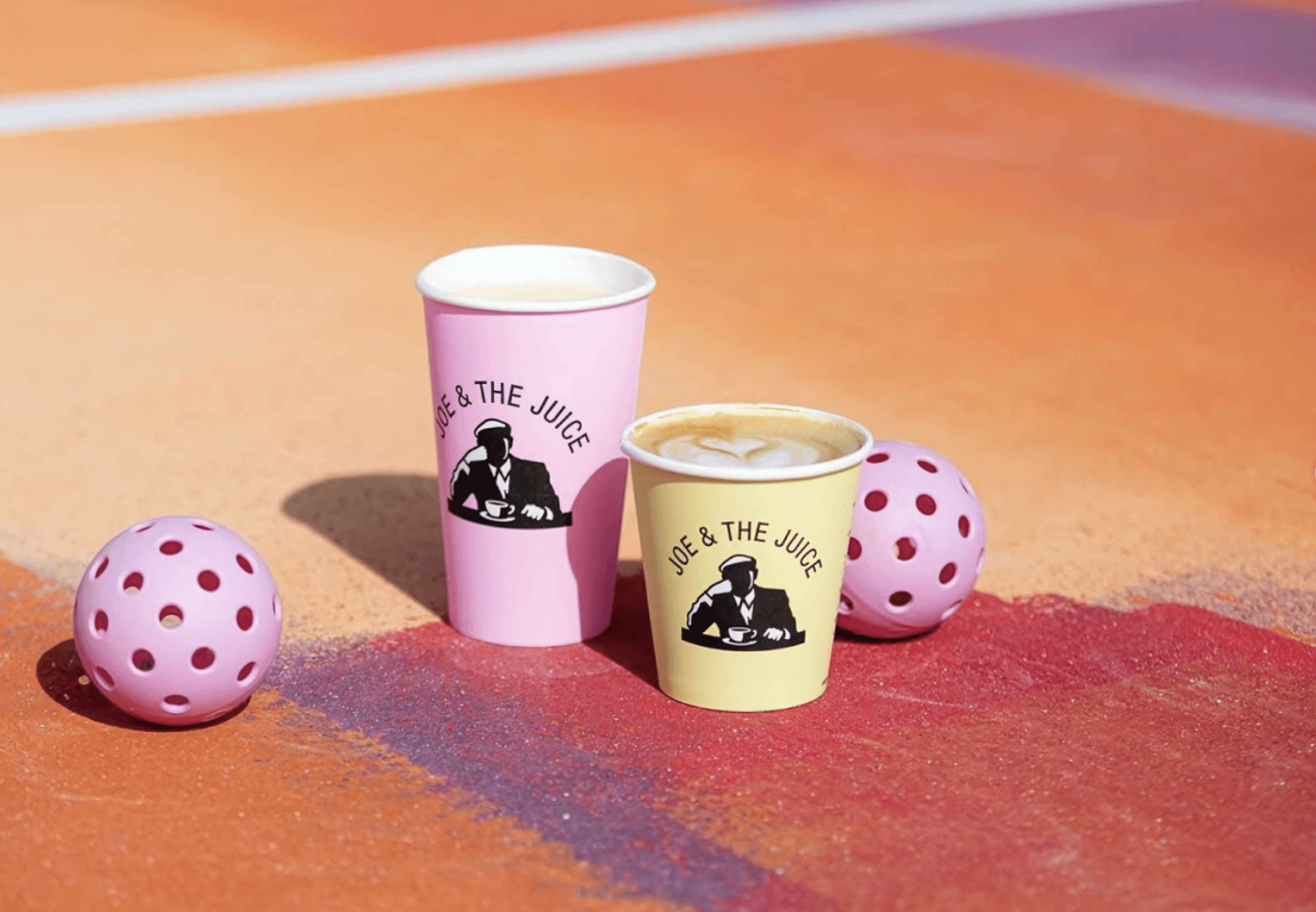This comprehensive guide will delve into the intricacies of crafting a solid brand identity that sets your business apart. We'll cover everything you need to know about brand identity - from its definition and marketing significance to the necessary steps for developing one, regardless of your company's size or tenure in the market.
We aim to equip you with invaluable insights on critical aspects of the branding process, including identifying goals, researching audiences and competitors, utilizing colors, fonts, logos, and messaging techniques, and implementing and evaluating them for maximum impact.
Such branding services craft cohesive narratives that resonate with audiences, fostering memorable and impactful brand experiences. This process is especially crucial for crypto and Web3 companies in building trust and clarity in an often complex and rapidly changing landscape.
With this knowledge at your fingertips, we strive to simplify and streamline your branding efforts. Our goal is to assist you in creating a distinctive brand identity that resonates with your target audience and leaves a lasting impression on those who come across it.
What Is Brand Identity Design?
The visual representation conveys the brand's values and mission, incorporating brand elements such as the logo, color schemes, textures, typography, and other visual aspects into promotional materials.
However, it should be noted that each individual may have a different perception of a brand. They can come from a variety of backgrounds and demographics, many of which could have varying perceptions of certain messaging styles or particular visuals. This is why thorough research on the target market's demographics is essential in creating a brand identity that resonates with them.
Source: Stripo

A brand's visual design should be visually appealing and align with its industry's established norms and expectations. An impactful and recognizable visual representation of the brand can be created by striking a balance between consistency within the brand's sphere and industry standards.
Visual Identity vs. Brand Identity
While often used interchangeably, visual identity and brand identity are distinct yet interconnected concepts that play crucial roles in shaping a brand's overall perception.
Visual identity refers to the visual elements that represent a brand, such as logos, color palettes, typography, and other design elements. These elements create a cohesive visual language that communicates the brand's personality and values to its target audience.
On the other hand, brand identity encompasses a broader scope, including not only the visual components but also the brand's voice, tone, messaging, and overall brand strategy. It defines how a brand wants to be perceived by its audience and reflects the brand's core values, mission, and purpose. While visual identity is a key component of brand identity, the latter also involves the emotional and experiential aspects that contribute to a brand's unique identity in the market.
In summary, visual identity is the tangible representation of a brand, while brand identity is the holistic perception that encompasses both visual and non-visual elements. Together, they form a powerful tool for building a strong brand image that resonates with customers and sets a brand apart from its competitors.
Brand Identity vs. Brand Image
Think of a brand as a person. Brand identity is how people present themselves—their style, tone of voice, and how they want others to see them. It’s the carefully chosen logo, colors, messaging, and personality a company puts out into the world.
Brand image, on the other hand, is how people perceive that person. It’s the gut feeling customers have after interacting with the brand—whether it matches what the brand intended.
A company might see itself as modern and innovative, but if customers find its experience clunky and outdated, the brand image won’t align with its identity. That’s why it’s essential to design a strong brand identity and ensure every touchpoint reinforces the right perception.
What Are the 5 P's of Brand Identity Design?
Think of your brand as a person. It has a reason for existing (Purpose), a reputation (Perception), a personality (Persona), a place in the world (Position), and loyal advocates (Promoters). These five P’s shape how people connect with your brand on a deeper level.
Source: CR8 Consultancy

1. Purpose: The Heartbeat of Your Brand
Why does your brand exist beyond making money? The purpose is what fuels everything you do. It’s the “why” that drives your team, inspires your customers, and sets you apart. A strong brand purpose is like a mission statement that lives and breathes in your actions, not just in words.
👉 Think of Apple’s relentless pursuit of innovation or Patagonia’s commitment to sustainability. Their purpose isn’t just a slogan—it’s woven into everything they do.
2. Perception: What People Say When You’re Not in the Room
You can design the perfect brand identity, but in the end, your brand is what people think and feel about it. Perception is shaped by customer experiences, word of mouth, and how well your brand delivers on its promises.
👉 Are you the friendly neighborhood coffee shop people rave about? Or the tech brand customers rely on but grumble about? Every touchpoint shapes perception—so consistency, authenticity, and trust matter.
3. Persona: Your Brand’s Personality
If your brand were a person, how would it talk? How would it dress? Would it be bold and confident, calm and reassuring, or quirky and fun? Your brand persona defines your tone, voice, and the emotions you evoke.
👉 Nike is the driven coach pushing you to do your best. Airbnb is a friendly host that makes you feel at home. Your brand’s persona should feel natural, not forced—like a friend your audience wants to engage with.
Source: HubSpot Blog

4. Position: Where You Stand in the Market
Your position is how you differentiate yourself from the competition. It’s not just about what you sell—it’s about the unique space you occupy in people’s minds. Are you the luxury option? The budget-friendly choice? The industry disruptor?
👉 Tesla doesn’t just sell electric cars—they position themselves as the future of transportation. Your brand’s position is your stake in the ground. Own it.
5. Promoter: Your Biggest Fans & Advocates
The best brands don’t just have customers; they have champions. Promoters are the people who love your brand so much that they tell everyone about it. They write glowing reviews, share your content, and bring in new customers simply because they believe in what you do.
👉 Think of Apple enthusiasts who camp out for new releases or Starbucks lovers who can’t start their day without their go-to order. These brands have built communities, not just customer bases.
How Does Brand Identity Design Benefit A Business?
Among the most critical benefits of effective brand identity design is the ability to form a trusting and loyal customer foundation. When customers are presented with a unique visual element, they begin to experience an emotional resonance with the company, which, over time, will drive their decisions when it comes to making purchases.
In other words, consistent exposure to brand style will influence purchasing decisions, increase repeat customer interactions, and encourage satisfied patrons to recommend the brand to others, achieving word-of-mouth marketing.
There are other advantages to a business's strong brand identity. For one, a business could be one of hundreds or thousands in a particular industry, so those with the most notable and memorable brand identities and messaging strategies through engaging visuals can stand out among a sea of competitors. This elevates a brand among other potential names, increasing its competitive advantage and edge.
Source: Zeka

Perhaps most noteworthy is that a strong brand and visual identity has a long-term economic upside. Suppose the upfront investments are directed at achieving a unified, consistent visual appearance. In that case, the brand can easily apply those to future iterations of products, packaging, and expansions without reinventing the branding wheel again.
If the brand identity, however, does not connect with target demographics, additional expenses will be required to finance an effort to rebrand. Getting it right from the start carries monetary advantages.
What Makes a Strong Brand Visual Identity?
Formulating a cohesive messaging effort and visual appearance involves various components. The first is defining the brand’s objectives and goals, including determining its target audience and what the brand hopes to achieve. These achievements will likely include securing customer loyalty and sales growth.
The second is creating a brand identity that resonates with the target customer demographic. This starts by understanding who the audience of interest is and how the individuals in that customer group perceive particular messages, imagery, and other visuals. Achievement in this area permits a more readily established emotional connection with customers, solidifying the brand's identity.
The marketing department needs to apply the composition of visual elements, including typography, coloring, and logos, in its efforts to create and distribute advertising materials. A consistent visual brand identity is crucial for establishing a strong brand image, enhancing brand recognition, and fostering customer loyalty.
All branding elements and visual aspects should reflect the brand’s mission statement and core values, adhering to industry trends and standards. This solidifies a brand’s identity in customers’ minds in the potential pool of consumers the brand seeks to reach.
All of the designs and strategies, however, would be for naught if they were not put to practical use. The goal is to use these representations of brand identity to reach a maximum audience, so they should be implemented across a variety of platforms, particularly those in the digital realm.
Not only does doing so assure the brand’s reach to a wider pool of consumers, but it also permits more feedback from that consumer base. This feedback is crucial in making adjustments, refinements, and changes to brand application strategies that will allow a business to optimize its brand identity.
Visual Elements of a Good Brand Identity
A strong brand identity isn’t just about looking good—it’s about creating a feeling, a connection, and a lasting impression. It’s your brand's personality brought to life through design. Let’s break down the key visual elements that make a brand stand out and feel truly alive.
1. Logo Design: The First Handshake
Your logo is often people's first interaction with your brand—think of it as your handshake. Is it firm and confident? Warm and inviting? A great logo is simple yet memorable, giving people an instant sense of who you are.
Source: Excelsior Measuring

2. Color Palette: The Mood Setter
Colors have a way of speaking to us before words do. A well-chosen palette sets the tone—whether it’s bold and energetic, soft and sophisticated, or earthy and organic. The right colors create a subconscious connection with your audience, shaping how they feel about your brand.
3. Typography: The Brand’s Voice in Print
The fonts you choose say a lot about your brand’s personality. Are you a sleek, modern sans-serif, timeless serif, or playful script? Typography should be easy to read and have a distinct voice that aligns with your brand’s character.
4. Imagery & Graphics: The Storytellers
The photos, illustrations, and graphic design elements you use should tell a cohesive story. Are they clean and minimal, rich and textured, or full of movement? Every visual should add to your brand’s narrative, making it instantly recognizable.
5. Layout & White Space: The Breath of Your Brand
How you arrange elements on a page—whether in a website, packaging, or marketing materials—affects readability and perception. Good use of white space creates balance and lets your brand breathe, making it feel polished and professional.
Source: Milk & Tweed

6. Consistency: The Glue That Holds It Together
A strong brand identity isn’t just about having great design—it’s about using it consistently. Every touchpoint should feel like it belongs to the same story, from your website to social media to packaging. That’s how you build trust and recognition.
When all these elements work together, your own brand identity doesn’t just exist — it resonates. It becomes familiar, trustworthy, and memorable. After all, a great brand identity isn’t just seen. It’s felt.
Bonus Tip: Branding Brief
A branding brief is a document that outlines the essential information needed to create a strong brand identity. It should include clear, concise language and specific examples. A well-written branding brief will inform your design decisions and ensure that your brand identity aligns with your brand’s purpose, values, and mission. When writing your branding brief, consider the following elements:
- Brand purpose and values
- Target audience and customer personas
- Unique selling proposition (USP) and competitive landscape
- Brand personality and tone
- Visual identity requirements (e.g., logo, color palette, typography)
- Messaging and content guidelines
A comprehensive branding brief serves as a blueprint for your brand identity. It ensures that everyone involved in the branding process, from graphic designers to marketing teams, is on the same page. By clearly defining your brand’s purpose, values, and target audience, you can create a cohesive and compelling brand identity that stands out in the market.
How to Create a Brand Identity (That Actually Feels Alive) in 7 Steps
To create a strong brand identity, follow these 7 steps:
1.
Find Your Purpose: Define why your brand exists beyond profits.2.
Understand Your Audience: Know who you’re talking to and what they care about.3.
Define Your Brand Personality: Decide how your brand "feels" and communicates.4.
Craft Your Visual Identity: Create a logo, color scheme, and design that reflect your brand's personality.5.
Find Your Brand Voice: Determine the tone and style of communication that matches your brand.6.
Stay Consistent: Apply your visual and verbal identity consistently across all platforms.7.
Adapt & Evolve: Allow your brand to grow and stay relevant over time while maintaining core elements.
These steps help create a cohesive and authentic brand that resonates with your audience.
1. Find Your "Why"
Every strong brand has a purpose that drives everything it does. This is the foundation of your brand identity. Ask yourself: Why does your brand exist beyond selling a product or service? What problem are you solving for your audience? What values or beliefs does your brand stand for?
Your "why" is not just a statement; it should be the heartbeat of your brand. It sets the tone for everything from your messaging to your interactions with customers. A clear, compelling purpose allows you to align your brand with people who share similar values, creating an emotional connection that transcends just products.
2. Understand Your Audience
You can’t create a meaningful brand identity if you don’t understand who you’re speaking to. Your audience should be at the center of every decision you make. Start by defining who they are, what they care about, what challenges they face, and what kind of solutions they’re seeking.
This goes beyond basic demographics—getting to know their aspirations, habits, and the emotional triggers that influence their decisions. By understanding your audience on a deeper level, you can craft a brand identity that resonates with them, feels relevant, and encourages loyalty.
3. Define Your Brand Personality
Your brand’s personality is the tone and style in which you communicate with your audience. It’s essentially how your brand acts and feels—like a person with a distinct character. To define your brand personality, ask yourself: If your brand were a person, how would they act? What kind of language would they use? What values would they prioritize?
Your brand personality is crucial because it informs every interaction, from your marketing copy to your customer service approach. It should be consistent but flexible enough to evolve over time as your brand matures and responds to audience needs.
Source: Ebaqdesign

4. Craft Your Visual Identity
Visual identity is the most immediate representation of your brand, and it encompasses everything people see when they interact with your brand. This includes your logo, color palette, typography, imagery, and overall design style. Each visual element should be carefully selected to reflect your brand personality and message.
Think about how you want your brand to feel — do you want it to be sleek and modern, warm and inviting, or sophisticated and bold? Every visual component should align with the tone of your brand and evoke the desired emotional response. Consistency in your visual identity across platforms and materials builds recognition and trust.
5. Find Your Brand Voice
The brand voice is how your brand communicates in writing or speech. It’s more than just the words you use. It’s the overall tone, pace, and style of communication. Your brand voice should reflect your brand’s personality and be consistent across all platforms — whether it’s on social media, in customer emails, or on your website.
Consider whether your brand voice is formal or casual, friendly or authoritative, optimistic or serious. The key is to ensure that it resonates with your target audience and feels authentic to your brand’s personality. A strong brand voice not only makes your communication more compelling but also helps build a deeper connection with your audience.
6. Stay Consistent
Consistency is a cornerstone of brand identity. For your brand to be recognizable and trustworthy, it must show up the same way every time. This means applying your visual elements, brand voice, and messaging consistently across all channels and touchpoints.
Maintaining consistency creates a cohesive experience for your audience, no matter where they interact with your brand. This doesn’t mean you can’t adapt or evolve over time — it just means the core elements of your brand should remain the same, ensuring that people can always recognize and connect with you.
7. Adapt & Evolve
A brand identity isn’t static. It needs to grow and evolve as your business does. Over time, as your audience shifts, new trends emerge, or your brand’s goals evolve, your brand identity may need to adapt. This doesn’t mean completely changing who you are but rather fine-tuning or refreshing certain aspects to stay relevant.
An adaptable brand identity allows you to remain connected to your audience while navigating the changing landscape of the market. This could involve updating your visual design, tweaking your messaging to reflect new values, or even refining your brand’s personality as it matures.
Build Your Brand Guidelines
A brand style guide is a comprehensive document that outlines the rules and guidelines for using your brand’s visual identity. It’s essential for maintaining consistency across all channels and ensuring that your brand is represented accurately. When building your brand guidelines, include the following elements:
- Color palette and typography guidelines
- Imagery and photography guidelines
- Messaging and tone guidelines
- Social media guidelines
- Website and digital guidelines
- Print and offline guidelines
Source: Prezentium

By including these elements, you’ll create a comprehensive brand style guide that will help maintain consistency and ensure that your brand is represented accurately across all channels. A well-defined brand style guide acts as a reference point for anyone creating content or materials for your brand, ensuring that every piece of communication aligns with your brand’s identity. This consistency not only strengthens your brand’s image but also builds trust and recognition among your audience.
Strong Brand Identity Examples
If there is any doubt about the potency of effective brand identity, one needs to look no further than some prominent businesses. Let’s take a look at just three examples of companies that have successfully crafted and executed their brand identities. These brands are easily identifiable by their name and symbol representation and draw an instant emotional connection from anyone who sees or hears their mention.
One of the absolute best examples of successful brand identity execution is Wealth. The vivid greens and yellows we used in Wealth's branding symbolize trust, growth, and a fresh approach to estate planning. This strategic choice and a versatile typography system create a modern yet timeless brand identity that resonates emotionally with users, making Wealth distinguishable in the financial services market.
Wealth Identity by Clay
Perhaps there is no better example of strong brand identity than Streetbeat. We incorporated bold typography and a dynamic, rotating logo to effectively communicate the complexity and ever-changing nature of the investment market. Consistent use of visual elements, such as isometric illustrations and robust infographics, ensures the brand message of innovation, growth, and accessibility is clear across all platforms, making the brand instantly recognizable and impactful within the fintech industry.
In a similar vein, at Clay, we help crypto brands carve out their own distinctive identity. Whether through thoughtful design choices or a seamless user experience, we understand that crypto brands must not only stand out visually but also evoke trust and transparency.
Our design approach uses cutting-edge visuals paired with user-centric interactions to craft a brand presence that resonates within the fast-paced world of digital assets.
Streetbeat Rebranding by Clay
What’s more, we exemplified how design can capture the essence of a brand's location and lifestyle in PalmPalm’s brand identity. Drawing inspiration from Venice Beach sunsets, PalmPalm's logo and visual elements appeal to a health-conscious, active audience. This consistent visual storytelling across the logo, website, packaging, and social media positions PalmPalm as a distinct and desirable brand in the sanitization products market, effectively resonating with consumers seeking both functionality and a trendy, lifestyle-oriented product.
PalmPalm Branding by Clay
Another great example is our success in blending modern aesthetics with a nod to the traditional values in CafePay's brand identity. The custom serif logotype conveys sophistication and timelessness, while the bespoke logomark subtly evokes a clock, highlighting the brand's connection to time management and schedules. This cohesive design ensures that CafePay stands out in the payroll management industry, effectively communicating its commitment to supporting the restaurant community.
CafePay Branding by Clay
Read More
Final Thoughts
A business’s success is tied directly to standing out from the competition by securing a robust brand identity. In-depth research, conceptualization, execution, and analytics-based adjustments are vital to securing a steady presence in the market. These can be achieved by harnessing a combination of neuroscience, memorable visuals, and targeted messaging to secure an emotional connection with customers that will allow a brand to thrive.


About Clay
Clay is a UI/UX design & branding agency in San Francisco. We team up with startups and leading brands to create transformative digital experience. Clients: Facebook, Slack, Google, Amazon, Credit Karma, Zenefits, etc.
Learn more

About Clay
Clay is a UI/UX design & branding agency in San Francisco. We team up with startups and leading brands to create transformative digital experience. Clients: Facebook, Slack, Google, Amazon, Credit Karma, Zenefits, etc.
Learn more


